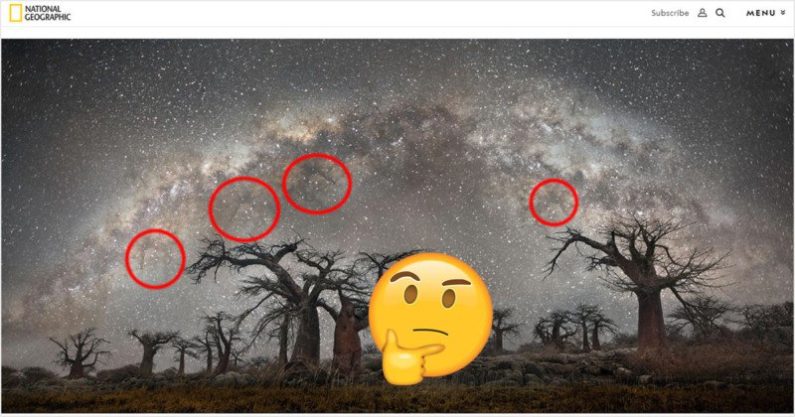
![]()
National Geographic recently published a series of gorgeous photos by photographer Beth Moon that shows some of the world’s oldest trees under the stars. But one photo, in particular, is now raising eyebrows after sharp-eyed readers noticed something strange about it.
The article, titled “See the world’s oldest trees by starlight,” was published on April 26th by Nat Geo science staff writer Catherine Zuckerman. It features photos by Moon, work that’s part of a project titled Diamond Nights, and here’s what the Nat Geo article says about how the photos were shot:
For Diamond Nights, Moon made the transition from film photography to digital capture. It’s a more light-sensitive technique, she says, and results in incredibly vivid images. Planning all her shoots around moonless nights, she wanted each tree to be primarily bathed in starlight, with additional glow from flashlights, for example, as necessary.
Because of the dark conditions, Moon set her camera on a slow shutter speed. This meant standing by for wind, and pausing during gusts. “With a 30-second exposure you don’t want the branches shaking,” she says. “So there was a lot of downtime.”
The article was shared across National Geographic‘s social media accounts. On Facebook, where Nat Geo has over 45 million followers, the shared story has racked up over 23,000 Likes, 7,900+ shares, and 500+ comments.
![]()
But people soon took to the comments to point out something fishy about one of Moon’s photos, a wide-angle shot with the caption: “Baobab trees are silhouetted against the Milky Way galaxy in Botswana.”
![]()
![]()
A closer examination reveals that a central area of the Milky Way appears to have been cloned at least a few times within the photo:
![]()
There’s no mention within the article of any of the photos being manipulated photo illustrations, and the images are presented as long-exposure photographs.
“Please do some research on a subject before misrepresenting the true night sky,” writes a commenter named Greg Stevens on the Facebook post. “Don’t get me wrong these are nice ‘picture’ but some of them have had the clone stamp used to create a false Milky Way and this should have been made clear before publishing.”
We’ve reached out to National Geographic and photographer Beth Moon for comment and will update this article if/when we hear back.

